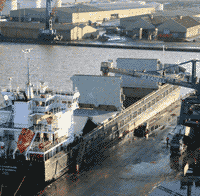Long-term view suggests higher world commodity prices

Higher world commodity prices are on the cards over the next 10 years as developing countries’ purchasing power grows and stocks remain tight, but farmers will have to cope with greater market volatility.
Addressing the Oxford Farming Conference, head of food trade at the OECD in Paris, Wayne Jones, said the exceptionally high prices seen in 2007 and early 2008 would not be repeated.
“But on average over the coming decade, prices in real terms of cereals, rice and oilseeds are projected to be 10% to 35% higher than in the past decade.”
Many factors were at play, he said, including transitory factors such as the weather and government policy, and structural factors, such as demand growth and productivity.
On the demand side, Mr Jones said double-digit income growth in developing economies had been a major driver in recent years, both in the volume of food consumption and the quality.
“We are coming to the end of that cycle,” he said, pointing to the fact that the average calorific intake in China now exceeded that of Japan. But although the growth in demand might slow, it would still continue on an upward trend.
The need for agricultural raw materials for biofuel production was also set to increase, said Mr Jones. “Our forecasts suggest demand for these feed stocks will double over the next 10 years.” This would underpin the upward shift in agricultural commodity prices.
On the supply side, he predicted that the recent 1-2%-a-year rate of productivity gain would slow – despite the continuing spread of GM crops – limiting the possible supply response to higher prices. There was always the possibility that countries such as Russia, Kazakhstan and Ukraine could substantially lift output, but they had not done so yet.
Without this boost to supplies, grain stocks were likely to remain tight in coming years, lending further support to commodity markets.
This low stock position was one factor that would contribute to much greater price volatility in the coming decade, as would the presence of commodity speculators and the growth in demand for agricultural raw materials from industrial users, said Mr Jones.
This price volatility was undoubtedly the biggest risk facing the sector and farmers would have to develop skills and mechanisms to manage the fluctuations.
There was also an onus on governments to move away from the traditional tools of price stabilisation, such as intervention purchasing, which often made things worse, and to develop a more holistic approach.
Decoupled payments were a good way of supporting farmers without distorting the market, said Mr Jones.
